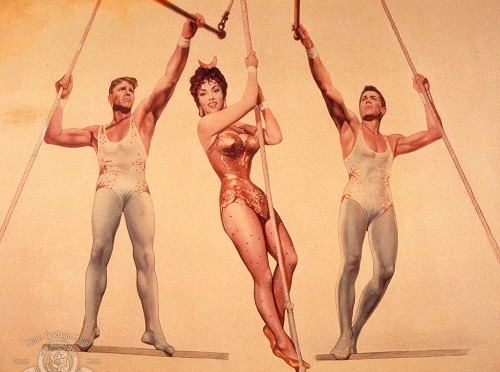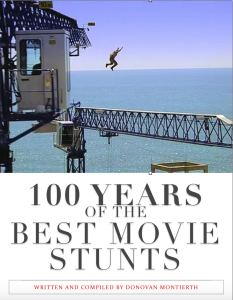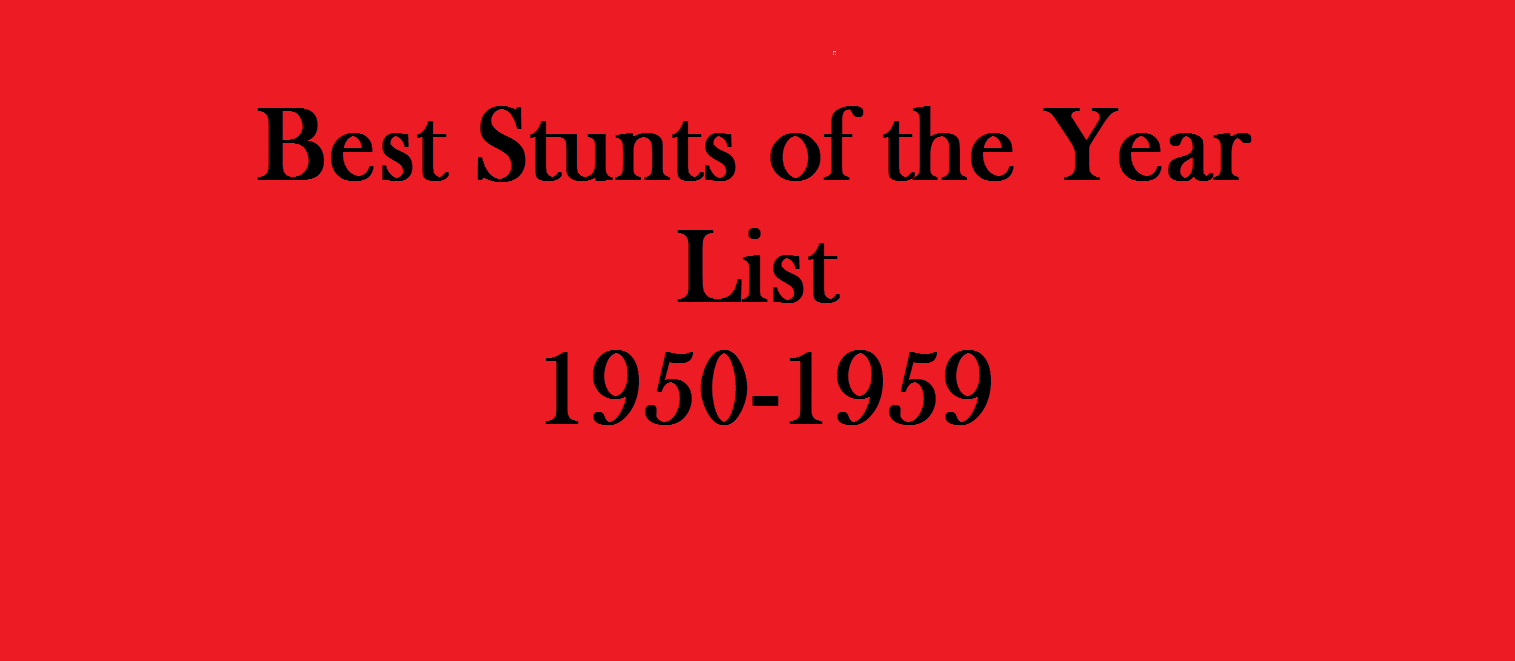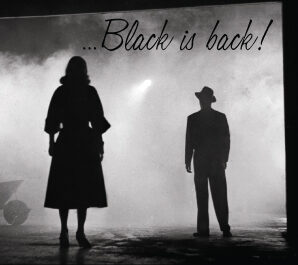Trapeze is highlighted by its truly breathtaking stunt sequences. Burt Lancaster performed all of the trapeze stunts himself, having worked in a circus before entering films. He insisted on doing the climactic triple flip, but technical adviser Eddie Ward initially was hesitant on Lancaster performing the stunt, so Ward doubled for Lancaster during the first weeks of shooting, but Lancaster told director Carol Reed that he knew how to do the stunt from the get-go so it is Lancaster you see in the final cut of the film.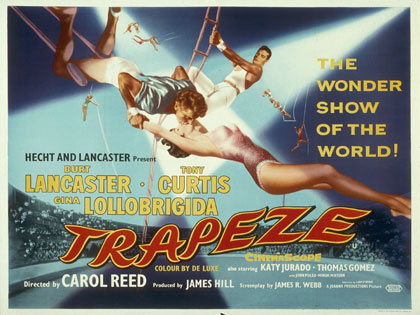
I found it interesting that the love triangle is the emotional core in this movie as I read somewhere that Burt was a big fan of the silent film The Unknown (1927), probably partially because the movie also took place in a circus, and Burt himself spent a lot of time early in his life in a circus. He once said that no scene in any movie affected him as emotionally as the one in this movie in which Lon Chaney learns that Joan Crawford does not love him. He was able to re-play this scene in a way himself as he loses the girl in Trapeze to Tony Curtis.
Trapeze was directed by Carol Reed for Hill-Hecht-Lancaster Productions. Carol Reed made some of the finest movies, including The Third Man, Night Train to Munich, Oliver!, The Agony and the Ecstasy and Odd Man Out, which won the very first BAFTA for Best Film.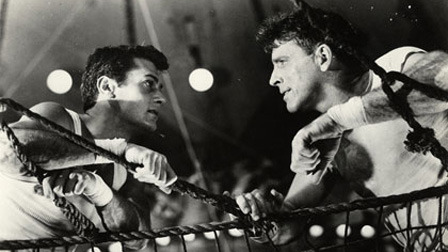
Things to look up (click on item to go to IMDB page):
- Burt Lancaster
- Trapeze
- Carol Reed
- Hill-Hecht-Lancaster Productions
- The Unknown
- Lon Chaney
- Joan Crawford
History of film companies as defined by Wikipedia: Hecht Hill Lancaster was a production company formed by Burt Lancaster in association with his agent Harold Hecht and James Hill. In 1948 Lancaster and Hecht formed Norma Productions, which later became Hecht Lancaster. James Hill joined in the mid-1950s. The company produced some of the most notable American films of the 1950s.
In 1956 they renewed their deal with United Artists. In late 1957 they announced they would make ten films worth $14 million in 1958.

